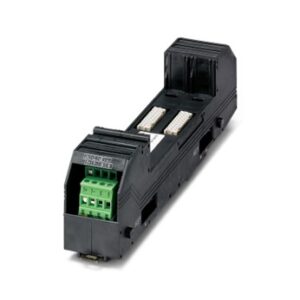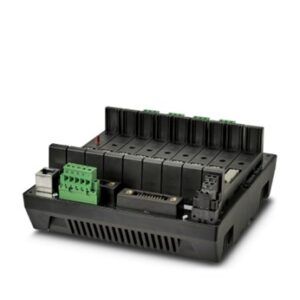
Smart supply chains that make use of AI algorithms and cutting-edge analytics are what drives today’s manufacturing industry. These technologies analyse vast amounts of data, including customer behaviour, social media activity and market trends. By identifying patterns and making accurate predictions, a smart supply chain in manufacturing provides valuable insights for businesses. This allows them to optimise production processes, reduce costs and meet customer demands more effectively.
Manufacturers can swiftly adjust forecasts of demand by gaining real-time visibility into market dynamics. This allows them to keep up with changing conditions, such as sudden spikes in demand or unexpected shortages of supplies. In fact, by 2025, it is predicted that more than 75% of supply chain operators will rely on AI-inspired systems for activities such as forecasting and planning.
This article will explore the three applications of a smart supply chain in manufacturing: demand forecasting, route optimisation and inventory management. Improving the effectiveness and efficiency of the supply chain is a major task for each of these areas. With concepts like Supply Chain 4.0, businesses can create a network that is more responsive, agile and efficient. This allows them to adapt dynamically to ever-evolving demands and market fluctuations.
1. Smart supply chains for demand forecasting
What is demand forecasting?
Demand forecasting is a method or process used to predict customer demand for a product or service. It traditionally relies on historical sales data, statistical models, and market trends. Studies show that about 73% of supply chain leaders continue to rely on spreadsheets for demand planning. Furthermore, a staggering 90% of these leaders agree that a technology upgrade is required within the next five years.
However, the traditional method is inflexible and struggles to adjust to sudden shifts in consumer demand. The result of this might be either an excessive amount of inventory or a shortage of it.
Excess inventory, on the one hand, requires funds and storage space. On the other, shortages may result in lower sales and unsatisfied customers. This highlights the constraints of traditional methods and the growing need for more sophisticated forecasting tools in the future of manufacturing.
With market volatility on the rise and companies offering products with shorter lifecycles, accurately forecasting demand has become increasingly challenging. On top of that, the amount of customer data available today can be overwhelming.
In a smart supply chain model, advanced analytics and AI algorithms analyse immense datasets. This includes customer behaviour and market trends, to provide more accurate predictions [1]. Manufacturers can adjust to demand forecasts quickly as conditions evolve, thanks to real-time visibility into market dynamics. This allows for better inventory management as well as levels of customer satisfaction.
Ultimately, a smart supply chain in manufacturing enables businesses to manage production schedules and distribute resources efficiently. This equates to major cost savings, faster delivery times and a more sustainable and responsive supply chain network.
2. Smart supply chains for route optimisation
What is route optimisation?
Route optimisation involves finding efficient ways to transport products from point A to point B. This could include delivering goods from the factory to distributors or directly to customers’ homes. In the past, planners relied on outdated data and fixed plans that quickly became obsolete. Today, with customers looking to get products quicker, companies must remain agile to keep up with demand. Smart supply chains are changing the game by constantly adapting routes to keep things running smoothly, no matter the obstacles.
With next-gen tools, like IoT devices and GPS trackers, planners now have the ability to closely monitor shipments in real-time. This allows them to make any necessary adjustments to the routes when they are needed. This can involve factoring in real-time traffic conditions, unforeseen delays, and even weather patterns to ensure on-time deliveries.
Automated systems have the potential to take this level of efficiency to the next level. By crunching the figures, they can find the most efficient routes. This frees up managers time to focus on the bigger picture.
Predictive analytics enables planners to anticipate future issues. This helps ensure timely deliveries and assists businesses in developing effective long-term supply chain strategies in the future of their manufacturing.
Straits Research reports that the global route optimisation market is currently valued at approximately $4 billion. It is projected to reach $12.4 billion by 2030, with a compound annual growth rate of 11.5%. As a result, route optimisation is rapidly becoming a major business.
3. Smart supply chains for inventory management
What is inventory management?
Inventory management can be best described as the behind-the-scenes choreographer of inventory stock levels. Traditional methods typically rely on periodic check-ins and manual reordering. However, these methods often struggle to find the right balance between maintaining sufficient inventory and avoiding both excess and shortages. This ties up capital and can lead to spoilage, and stock shortages, which can result in lost sales and frustrated customers.
With companies juggling more products than ever before, keeping tabs on inventory can become a costly problem. It is worth noting that inventory holding costs usually account for between 20-30% of total inventory value. The specific percentage can vary based on the size of the business and the industry in which it operates.
Smart supply chains are all about embracing next-gen tech and data-driven decision-making. These factors play a vital role in streamlining inventory management [3].
Each item in inventory is equipped with RFID tags that connect to a central system. This allows for real-time tracking and updates. Managers can easily access the most up-to-date information, allowing them to pivot when needed.
With the addition of predictive analytics, inventory management takes on a whole new dimension. It becomes a proactive strategy, allowing businesses to stay ahead of the game instead of always playing catch-up. In addition, advanced reordering systems, powered by AI and machine learning, closely monitor inventory levels. When stocks fall below a certain threshold, they immediately begin the reordering process.
Smart supply chains use real-time data, advanced analytics, and automation to enhance demand forecasting, route optimisation, and inventory management. This results in a more responsive, adaptive, and efficient network.
A smart supply chain in manufacturing can transform business operations
So, adopting smart supply chain systems and technologies can transform activities such as demand forecasting, route optimisation, and inventory management. When used correctly, these advances will allow companies to become more responsive, adaptive, and efficient. That, in turn, leads to happier and more satisfied customers, laying the groundwork for longer-term business relationships.






